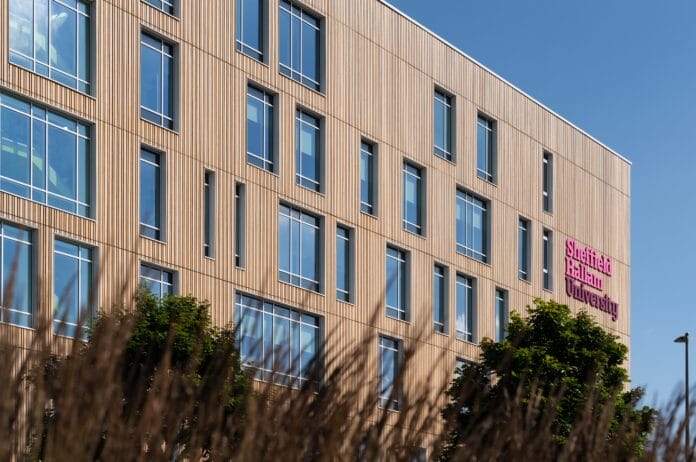
Have you ever wondered why caravans absorb so much heat, compared to stone-built structures? Heritage Architect, Matthew Morrish, looks at why we need to think ‘fabric first’ as we try to combat rising heat levels.
July 2022 saw the UK Health Security Agency issue its first ever Level 4 heat-health alert as 400 C was recorded in the UK for the first time.
During a typically damp and cold February, last summer’s high temperatures seem distant, but amid ongoing global temperature rises, we will soon be wondering how to cope in the heat once again.
As the January 2024 House of Commons Environmental Audit Committee report, ‘Heat resilience and sustainable cooling‘, sets out, July 2022 saw the UK Health Security Agency issue its first ever Level 4 heat-health alert as 400 C was recorded in the UK for the first time. Apart from the serious consequences for health, wellbeing and productivity as the climate warms, the demand for cooling technologies will rise. This demand for air conditioning in the UK means coal-fired power stations being brought into service, thereby making the world hotter and increasing the carbon content of our energy mix. The report credits parks, trees, water bodies and green roofs as the most important ways in which passive cooling can be achieved, and advocates passive measures first then fans over active cooling.
Architecturally, we know that passive measures can be very effective. If you have ever spent a hot summer’s day in a caravan and another in a traditionally-built cottage or stone building, you will have experienced ‘Decrement Delay’ – the caravan’s interior temperature closely following that of the exterior to become oppressive, whilst the stone building stays cool and pleasant, slowly absorbing the heat and delivering it to the interior some hours later, whilst some is lost back to the cooler night-time air.
Despite their contrasting construction, the thin lightweight aluminium composite boarding of the caravan and the thick heavy stonework share a similar (poorly performing) thermal resistance U-value. This calculated value is the most common way of describing the thermal performance of a building’s envelope and has its limitations.
Amongst the many differences of historic era, mobility and longevity between the two structures, the caravan’s light, modern construction relies upon lightweight, low-density, synthetic materials, whilst the traditional cottage relies upon high-density, natural materials, but it is the slow rate at which the latter’s natural materials transfer heat, the thermal diffusivity, that benefits the occupants of the interior.
Heavyweight materials serving as thermal mass all act as heat absorption in the building’s occupied hours, releasing the heat later at night to a cooler, possibly naturally ventilated interior ready to go again the next day.
Heavyweight materials serving as thermal mass might be exposed internal floors, walls or ceilings that use stonework, plastered masonry, terracotta or concrete – they all act as heat absorption in the building’s occupied hours, releasing the heat later at night to a cooler, possibly naturally ventilated interior ready to go again the next day. Internal and external decrement delay as part of an environmental strategy may be able to control – and prevent – the overheating of a building’s interior with limited mechanical fan assistance or active measures required.
Data shows that this pattern of weather – and subsequent discomfort – is likely to continue. We need to develop strategies to combat the effects this has on building users and find a way to improve comfort and wellbeing. High insulation levels alongside high-mass/low-diffusivity buildings could suit the regional variations of a warming UK climate, particularly if the mass were provided by a locally sourced material like natural stone and if the insulation were a breathable, vapour open natural material that can take up excess moisture and later release it, attenuating the changes in humidity that UK buildings experience. Advances in technology are also showing the potential for new lightweight materials to have higher thermal mass properties.
Whether it’s the caravan or the cottage approach, finding opportunities for the use of these passive measures can provide designers with a low-carbon approach to mitigating some of the effects of climate change and to help us all keep cool in the hot summers that are inevitably going to come.
Credit to www.Greenspec.co.uk and Heat resilience and sustainable cooling – Environmental Audit Committee (parliament.uk) for inspiration.


